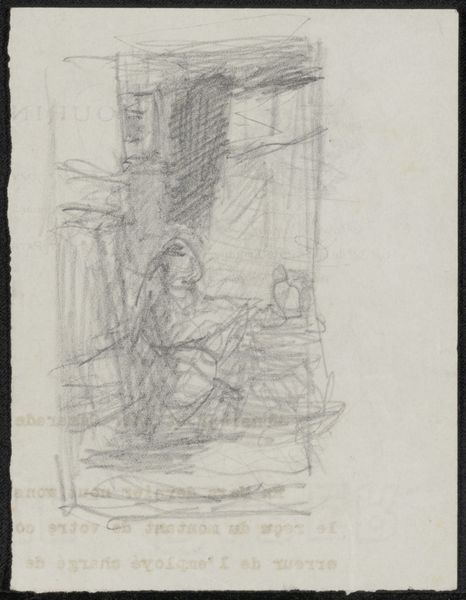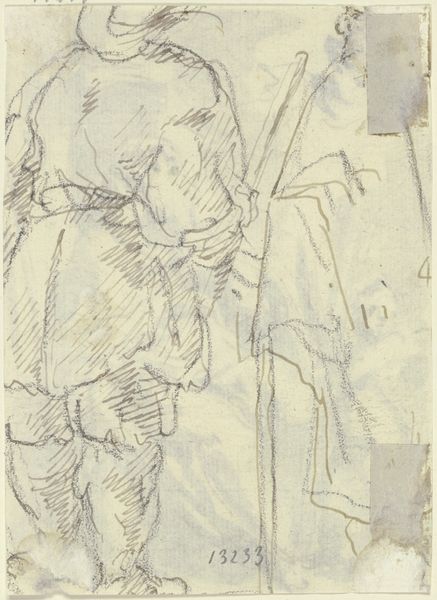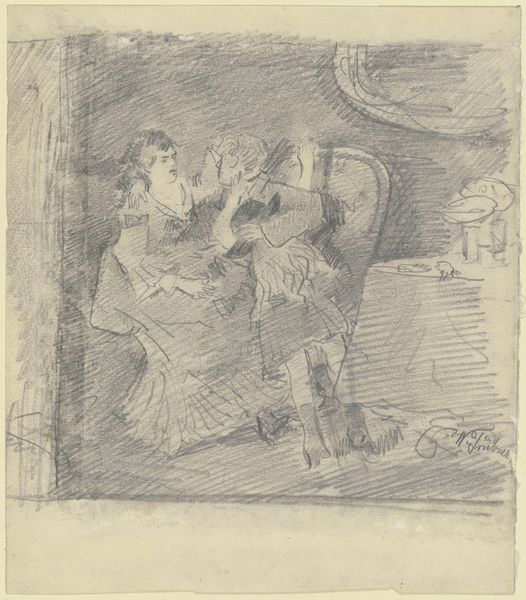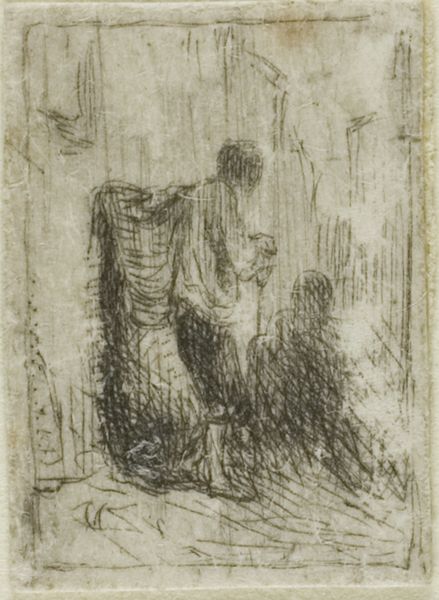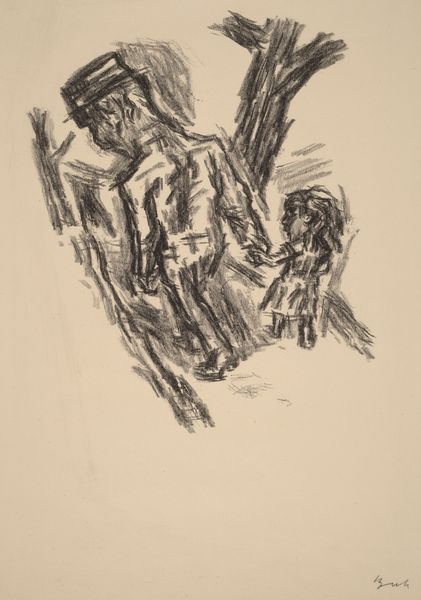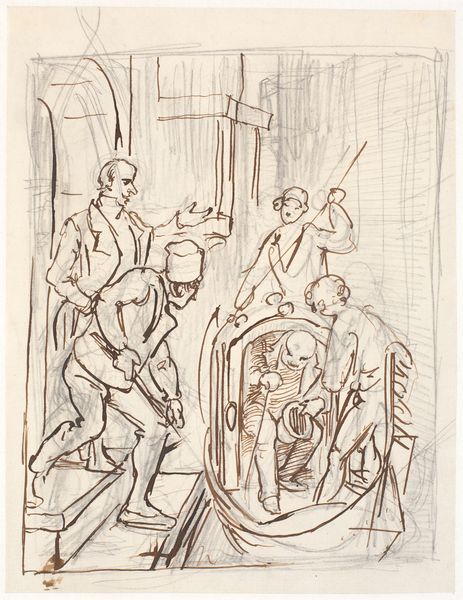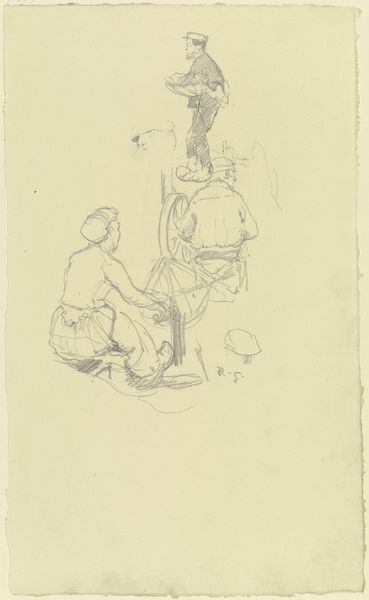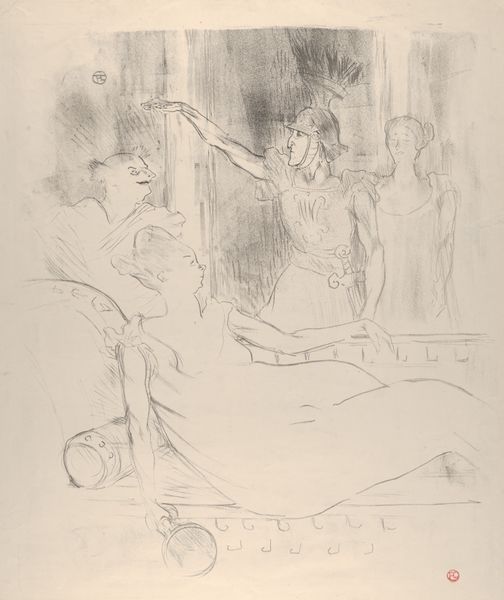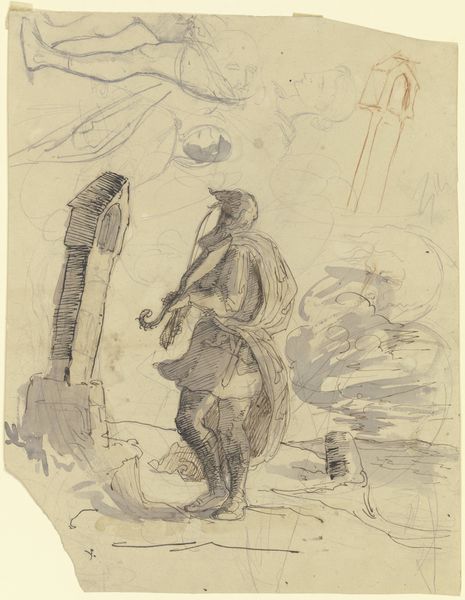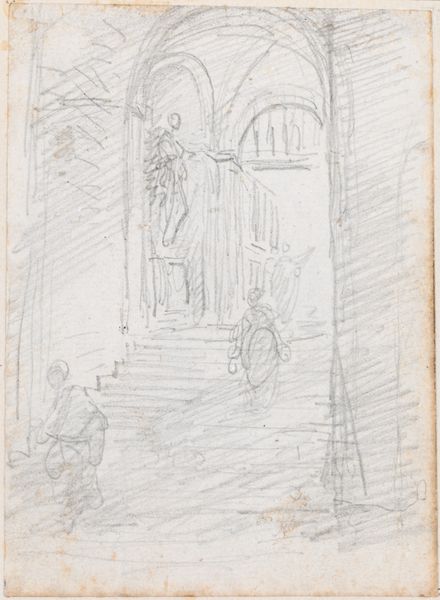
Copyright: Public Domain
Editor: This drawing just vibrates with artistic energy. It feels very immediate, like catching a secret glimpse into a creative world. Curator: Indeed. What we're looking at is titled "Atelierecke, zwei Personen vor der Staffelei," which translates to "Studio Corner, Two People Before the Easel." It's a work in pencil by Gustav Schraegle, created in 1895, and now residing at the Städel Museum. Editor: There's such a compelling rawness to it, especially how the artist captured the fleeting gesture, a captured moment. What's significant about Schraegle's choice of portraying this almost casual workshop tableau? Curator: The theme offers a unique perspective into late 19th-century artistic practice, presenting a slice-of-life view inside an artist's working environment, emphasizing an almost reportorial approach, where the tools, setting, and even the casual posture of the two individuals gain iconic presence through their ordinariness. Editor: Those layered graphite strokes...almost impatient. They perfectly render the contained chaos that all creative endeavors share, wouldn't you agree? I can practically smell the linseed oil. Curator: Precisely. Each visible component possesses a symbolic resonance—easel, canvases, artists at work—suggesting dedication, aspiration, and the constant pursuit of art-making. What resonates significantly is that rather than heroic renderings, Schraegle presents an understated, truthful image of the art-making environment, suggesting both introspection and the daily effort involved in transforming a vision into tangible creation. Editor: It speaks volumes about the inherent romance found in mundane, daily labor. Kind of like when painters paint painters! Curator: Right, and perhaps how the very act of creating carries its own symbolic power. Editor: So even a quick pencil sketch holds layers of insight. Art about art— meta, even for its time. It kind of makes me want to sharpen my pencils! Curator: Yes, to understand art's history through the visual echoes it leaves behind. Thank you for the evocative imagery, perhaps our listeners will see it anew, as well.
Comments
No comments
Be the first to comment and join the conversation on the ultimate creative platform.

